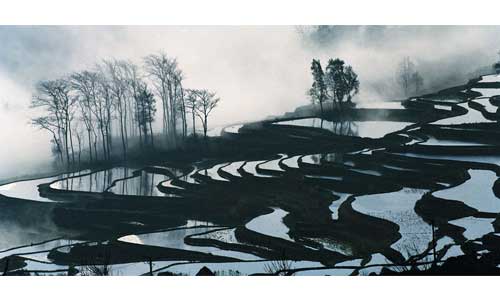Protecting cultural heritage and managing water are two highly essential issues in China. The former will attract domestic and foreign tourists and the latter will make a green environment and support agriculture and the harmony between human and nature. In turn, both will contribute to the country’s economy.
Themed “The Protection, Inheritance and Utilization of the Culture of Canal Cities”, the World Canal Cities Forum was held in Yangzhou, a city in east China’s Jiangsu province on October 12. The forum aimed at protecting the cultural remains, promoting the cultural values, protecting and restoring the ecology and improving the environment of the Grand Canal.
Chinese officials reiterated adhering to the principle of “respecting history and minimizing intervention”, drawing up plans on heritage protection in accordance with international rules and standards and retaining or restoring the authentic and original style of the heritage sites in their protection and renovation efforts. Strengthening protection over canals, promoting cultural heritage inheritance, enhancing tourism utilization, and increasing exchanges and cooperation were four suggestions made by one of the participants of the forum.
The participants further pointed out the transformation from cultural heritage to public cultural space, establishment of a good relationship between cultural heritage and public demand and creation of a dynamic, perceptible and belonging public space. All the functions and facilities implanted should be prudent and restrained and conform to the logic of local culture, they suggested.
Addressing the forum, Panama Ambassador to China Francisco Carlo Escobar Pedreschi stressed the importance of canals and waterways. As a result, he said, “The Panama Canal continues to be an important and neutral link for seaborne trade which since the opening of the neopanamax locks has witnessed over 4,600 transits through the waterway, enabling the movement of all types of commodities in more than 144 trade routes all over the world joining 1,700 ports”.
Meanwhile, setting up the concept of low carbon and recycling, exploring actively the road to canal ecological protection and restoration, maintaining ecological water environment and biodiversity by taking comprehensive measures such as river and lake connections, river way treatment, wet land restoration, ecological water allocation and groundwater protection, developing circular economy, building low-carbon communities, advocating green travel, and creating an urban public ecological space – which will integrate beautiful ecology, history and culture, tourism, leisure, fitness and sports – were the significant points stressed in the forum. Likewise, members of the World Canal Cities Organization (WCCO), which is responsible for the annual Canal Cities Forum, were urged to strengthen the unified planning in terms of industrial development, urban layout, infrastructure construction, ecological shoreline delineation, pollution emission standards and bringing the protection, inheritance and utilization into the track of legalization.
According to Yangzhou officials, the Grand Canal of China links the Land Silk Road with the Maritime Silk Road, communicates between the ancient and modern times, connects the world and enjoys multiple co-prosperity. They urged the world international canal organizations, including WCCO, to take full advantage of the dual characteristics of international and folk natures to build a platform for international exchange.
Chines Jiangsu province planned to build a Grand Canal Museum and a Grand Canal Culture National Park and designated 11 pilot cities, which are remarkable achievements in terms of protecting cultural heritage.
To view Afghanistan, it is facing water shortages in recent years in many provinces including the capital city of Kabul. It goes without saying that years of war led to the destruction of agriculture system and water irrigation canals. Afghanistan should not ignore the importance of irrigation canals, which are also an element of cultural heritage to be restored and retained.
Even though water management has been improved with the efforts made by the National Unity Government and some projects were completed for managing water, there is still much desired to be done so as to enhance the efficiency of water use and improve agricultural productivity.
It is worth saying that China is making the best use of even the minimum resources. That is to say, China is highly creative in utilizing and industrializing the resources, which can be a perfect role model for Afghanistan, named as ‘a rich man lying on gold’. As a close neighbor, Afghanistan has to learn from China in utilizing its resources and restoring and maintaining its cultural heritage. It is hoped Afghanistan will also make the best use of its resources, including irrigation canals and historical sites so as to increase agricultural productivity as well as the number of foreign tourists for boosting the country’s economy.
Home » Opinion » Learning the Protection of Cultural Heritage and Waterways from China
Learning the Protection of Cultural Heritage and Waterways from China
| Hujjatullah Zia

